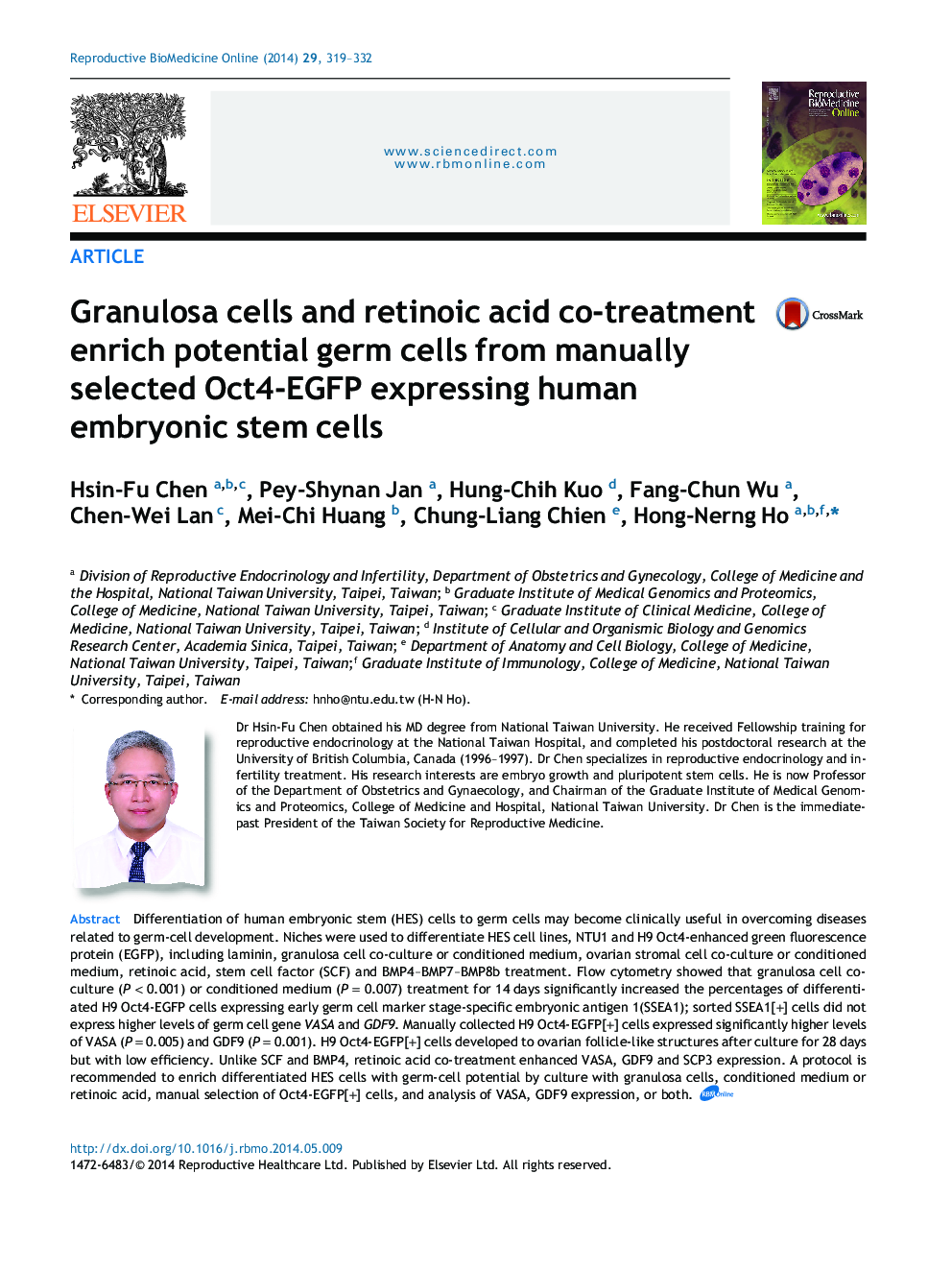| Article ID | Journal | Published Year | Pages | File Type |
|---|---|---|---|---|
| 3970122 | Reproductive BioMedicine Online | 2014 | 14 Pages |
Differentiation of human embryonic stem (HES) cells to germ cells may become clinically useful in overcoming diseases related to germ-cell development. Niches were used to differentiate HES cell lines, NTU1 and H9 Oct4-enhanced green fluorescence protein (EGFP), including laminin, granulosa cell co-culture or conditioned medium, ovarian stromal cell co-culture or conditioned medium, retinoic acid, stem cell factor (SCF) and BMP4–BMP7–BMP8b treatment. Flow cytometry showed that granulosa cell co-culture (P < 0.001) or conditioned medium (P = 0.007) treatment for 14 days significantly increased the percentages of differentiated H9 Oct4-EGFP cells expressing early germ cell marker stage-specific embryonic antigen 1(SSEA1); sorted SSEA1[+] cells did not express higher levels of germ cell gene VASA and GDF9. Manually collected H9 Oct4-EGFP[+] cells expressed significantly higher levels of VASA (P = 0.005) and GDF9 (P = 0.001). H9 Oct4-EGFP[+] cells developed to ovarian follicle-like structures after culture for 28 days but with low efficiency. Unlike SCF and BMP4, retinoic acid co-treatment enhanced VASA, GDF9 and SCP3 expression. A protocol is recommended to enrich differentiated HES cells with germ-cell potential by culture with granulosa cells, conditioned medium or retinoic acid, manual selection of Oct4-EGFP[+] cells, and analysis of VASA, GDF9 expression, or both.
